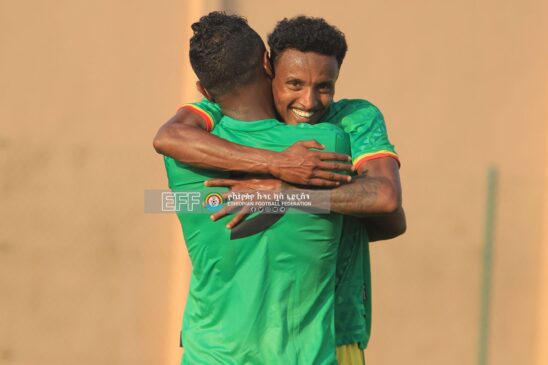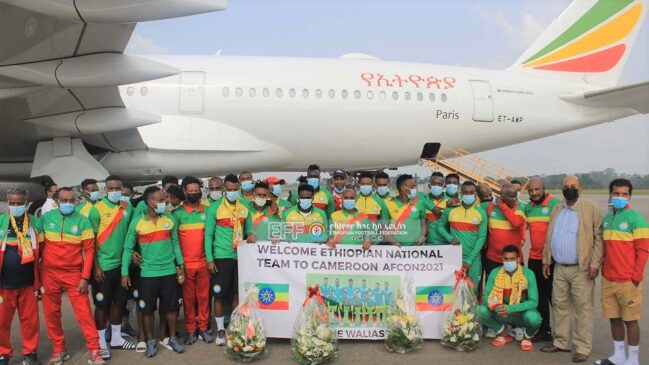Three things to revitalize the Walias’ chance of qualification
OPINION
By Endale Mitiku Adere
The Ethiopian national team has its third and fourth group matches for Morocco 2015 against Mali in the coming weekend and the next mid-week. The matches are a make or break affair as the team has lost both the previous two matches against the other group members Algeria and Malawi at home and away respectively. In this piece, I focus on those two matches and the once looming to take place starting on Saturday following a return match on Wednesday. I proffer what I think can help the Walias to vanquish challenges. In doing so I used some big European club sides, but it has to be noted that there is a huge gap in both the level of professionalism and playing environment between our national team and those club sides. I refer to them only to show where and how the formation is used at the higher level but not to compare them and us.

Formation is vital
Universally football undergoes a swift formation and tactical shift by oscillating in an unpredictable manner. For this, the 4-3-3 formation which the current Ethiopian national team manager is using can be mentioned as an example. It is a formation that was around even during the periods of Pele and it was notably popularized by the Dutch in the 1970s, who made it their brand style. Currently, one of the powerhouses of the world football FC Barcelona has been using it for many years and the last year’s European Champions League winner team, Real Madrid used it in the second half of the previous season.
For those teams this formation worked excellently because firstly, they didn’t deviate from the basic principles of the formation. These include having well organized positional play, playing in the oppositions half, good circulation of the ball, creating as many chances as possible, penetrating by wing play, using variations of long and short balls, etc. In addition to these, the formation demands the team to do the following when the ball is in the opponent’s possession. The forwards of the team must start defending up front by exerting pressure on the ball, moreover there must exist a well-organized and constant communication at the back. Secondly, those teams recruited players who are suitable to that formation.
When FC Barcelona uses it, the team usually possesses the ball and makes fast exchange of passes and the midfielders look for runs from the attackers to the free space created at the back of the opponent’s defenders, then make passes and chances are created in this way. Contrary to that, Real Madrid used speedy attacking play dominantly by using the two wings. For this Ronaldo and Di Maria contributed significantly.
When we come to our national team, we don’t have the kind of players who are suited to this formation. Moreover, the way we tried to implement the system had big flaws. To elaborate it, we don’t have players particularly in the flanks who are very fast and can run with the ball quicker than opposition players. We aren’t athletic enough to play like Madrid and Barcelona though we can hold the ball like the latter.
Suggestion
Remember the old adage in football! System doesn’t make players; rather it is the players who make it. Thus, as long as we don’t have quick players in flanks, we shall come up with another formation that is suitable for our players and therefore my verdict is abandoning the current formation.
In its place we can employ a 4-3-1-2 formation. As one of our problems is having quick wing players we can design a system that doesn’t demand wing players and the one I recommends was successful in this regard. The three players in front of the back four are midfield players whose role varies from being a box-to-box midfield player to being a deep-lying creative player and defending player. All this midfielders have a defensive duty and covering the back four besides to contributing to the attack. The one player in front of them who Italians label him as a trequartistas position player will be a creative midfielder in the opposition half and make mostly the final pass to the front two stickers.
When we consider empirical example we can mention AC Milan, one of the ten best club sides in the history of the game. The AC Milan side that won the European Champions League twice in 2003 and 2007, used this formation with Kaka playing at the trequartistas position and Pirlo being the deep-lying creative midfielder. So, if this is the case then we can use Shimeles in his best position i.e. behind the two strikers. One may criticize this formation as too narrow. Admittedly it is narrow, however, if the fullbacks can give width by attacking in flanks.
The sad thing Ethiopia is Saladin-less
Remember the moment when Saladin scored two goals for Ethiopia against Central Africa, the first one was a pure striker instinct goal and the second was a goal that showed his commitment and determination for his national team. He dribbled the ball for more than forty meters despite being injured earlier in the match. He dribbled the ball with his incapacitated legs up until he saw the ball in the opponent’s net then he tried to celebrate with the fans the he laid in front of the so called “Katanga” side of the stadium. Then he was sidelined for long period of time. Following that he missed two matches against Benin and Sudan, and then returned to score one of the curtail goals which sent us to the African Cup of Nations.
Though apparently missing him has an impact on the team, Getaneh Kebede has proven himself to be the man who filled the void created by Saladin’s absence. In the matches when Saladin wasn’t available he scored for instance, two goals against Sudan in Khartoum. In the matches against Mali a lot is expected from him and his striking partner Oumed Oukri whatever formation the manager uses. However, one thing has to be clear i.e. Getaneh is not as physical as Saladin and long searching pass from the defenders will not definitely help him to score goals. He is a type of striker who are known as fox in the box Oumed is as well. Therefore, playing long ball is suicidal.
Ethiopia’s right fullback problem needs solution
Rewinding almost two years we recall the day when we lost 4-0 against Burkina Faso. The first goal we conceded was due to the fault of our right back, again when we played versus Nigeria we gave away two penalties in the same side. Last year, knowing this deficiency Sewnet used two right backs by putting them in at front and back to resolve the problem when we faced Nigeria to qualify for Brazil 2014. This helped the team and the team didn’t concede a goal on that side. However, recently Algeria used this same route to score their two goals.

In those matches we used mostly Behailu Assefa, Alula Girma mostly and Birhanu Bogale seldom. These players have tried to do their best, however, due to several reasons such as failing to get support from the players playing inform of them, their problem of being at the right position at the right time etc. they’re unable to be as good as the other three defenders relatively. Mariano Barreto first dropped Behailu Assefa from the national team and used Alula Girma for the Algeria match. Lately he got rid of Alula Girma from the national team after he used Birhanu Bogale for the Malawi game. This clearly shows his lack of confidence on the players playing in this side of the defense and also how he is trying to address the problem. For me instead of making change in personnel he should focus on changing the formation as I pointed out above.
The Author:
Endale lives in Norway, where he is a student at the University of Oslo. He has been following football for the past two decades. He supports the Ethiopian Walia Ibex and FC Barcelona (Spain) and AC Milan (Italy). You can follow him at: https://twitter.com/nohaminendale



